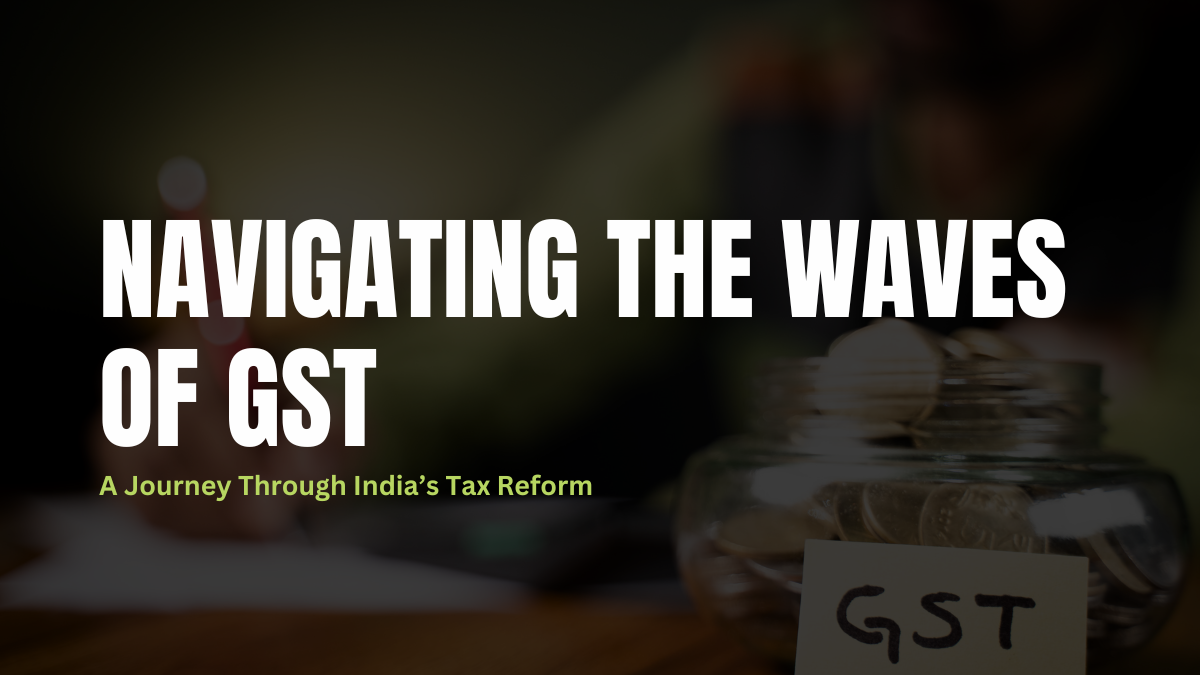The implementation of Goods and Service Tax (GST) in India marked a significant milestone in the country’s economic landscape. Envisioned as a comprehensive indirect tax reform, GST aimed to streamline taxation processes, reduce complexities, and foster a unified national market. Let’s navigate the waves of GST.
There are several types of GST and rules governing its implementation:
- SGST (State Goods and Service Tax):
Collected by individual states through intrastate transactions, this mechanism ensures a steady revenue stream for the state government.
- CGST (Central Goods and Service Tax):
Collected by the central government on intrastate transactions, this process significantly contributes to the central pool of funds. This financial mechanism ensures a streamlined flow of resources, ultimately strengthening the overall fiscal structure.
- IGST (Integrated Goods and Service Tax):
Applicable to interstate transactions and collected by the central government, this mechanism ensures seamless tax credits throughout the supply chain. By facilitating a smooth flow of credits, businesses can optimize their financial processes and enhance overall operational efficiency. This streamlined approach not only fosters compliance but also contributes to a more transparent and cost-effective business environment.
- UTGST (Union Territory Goods and Service Tax):
UTGST is similar to SGST, and it is applicable to the Union Territories of India. Moreover, this data is systematically gathered by the respective Union Territory governments, playing a crucial role in meeting their specific financial requirements.
Rules:
- Input Tax Credit (ITC):
Businesses can claim credit for taxes paid on inputs when calculating their final tax liability.
- Reverse Charge Mechanism (RCM):
Certain specified goods and services mandate the recipient to pay taxes instead of the supplier.
- Threshold Limit:
Small businesses with a turnover below a specified threshold are exempt from GST registration.
- Composition Scheme:
Available for small businesses with a turnover up to a defined limit, allowing them to pay tax fixed rate and the simplified returns.
- GST Returns
Regular filing of returns like GSTR-1 for outward supplies, GSTR-3B for monthly summary, and GSTR-9 for annual returns.
- E-way Bill
Mandatory for transporting goods valued above a certain limit, ensuring seamless movement with proper documentation.
Understanding these crucial types and rules is imperative for businesses seeking to comply with GST regulations. By comprehending these aspects, companies can actively contribute to the smooth functioning of the tax system. This knowledge is pivotal for navigating the complexities of GST and ensuring seamless adherence to regulatory requirements.
Also read: Challenges of ERP users in migrating to GST
As we delve into the journey from the inception of GST to its current impact on the business industry, we witness the evolution of India’s tax ecosystem.
- Immediate Impact on Businesses
The transition to GST brought both challenges and opportunities for businesses. Despite the fact that compliance requirements increased, the seamless flow of input tax credits became a game-changer. Consequently, companies had to adapt their accounting systems. However, the promise of a unified market offered a potential boost to interstate trade.
- Sectoral implecations
Different sectors experienced varying effects based on their business models. Initially, manufacturing and supply chain-intensive industries faced disruptions, but ultimately, they benefited in the long run. On the other hand, service-oriented businesses enjoyed more straightforward tax structures, fostering both growth and ease of compliance.
- Evolving compliance landscape
The digitization of tax processes marked a paradigm shift. Subsequently, the GST Network (GSTN) emerged as a technological backbone, streamlining registration, return filing, and payment procedures. Automation plays a crucial role, reducing manual errors. However, initial hiccups highlighted the need for continuous improvements in the GST system.
- 2023: current scenario and Future prospects
As of the current data, GST continues to evolve. Businesses have adapted to the new normal, and, concurrently, the government remains committed to addressing challenges. Moreover, the focus now shifts to leveraging technology for more efficient tax administration and, consequently, further simplifying compliance procedures.
The implementation of GST has been a transformative journey for businesses and the economy at large. Transitioning from the initial adaptation challenges, the GST has played a pivotal role in reshaping the tax landscape. Moreover, as India marches forward, the journey of GST remains a compelling case study in effective policy implementation and the resilience of businesses in the face of change. The evolution from the early stages to the present day dynamics underscores the lasting impact of this taxation reform.





